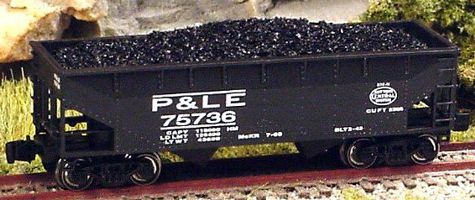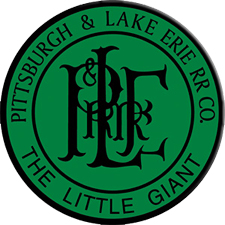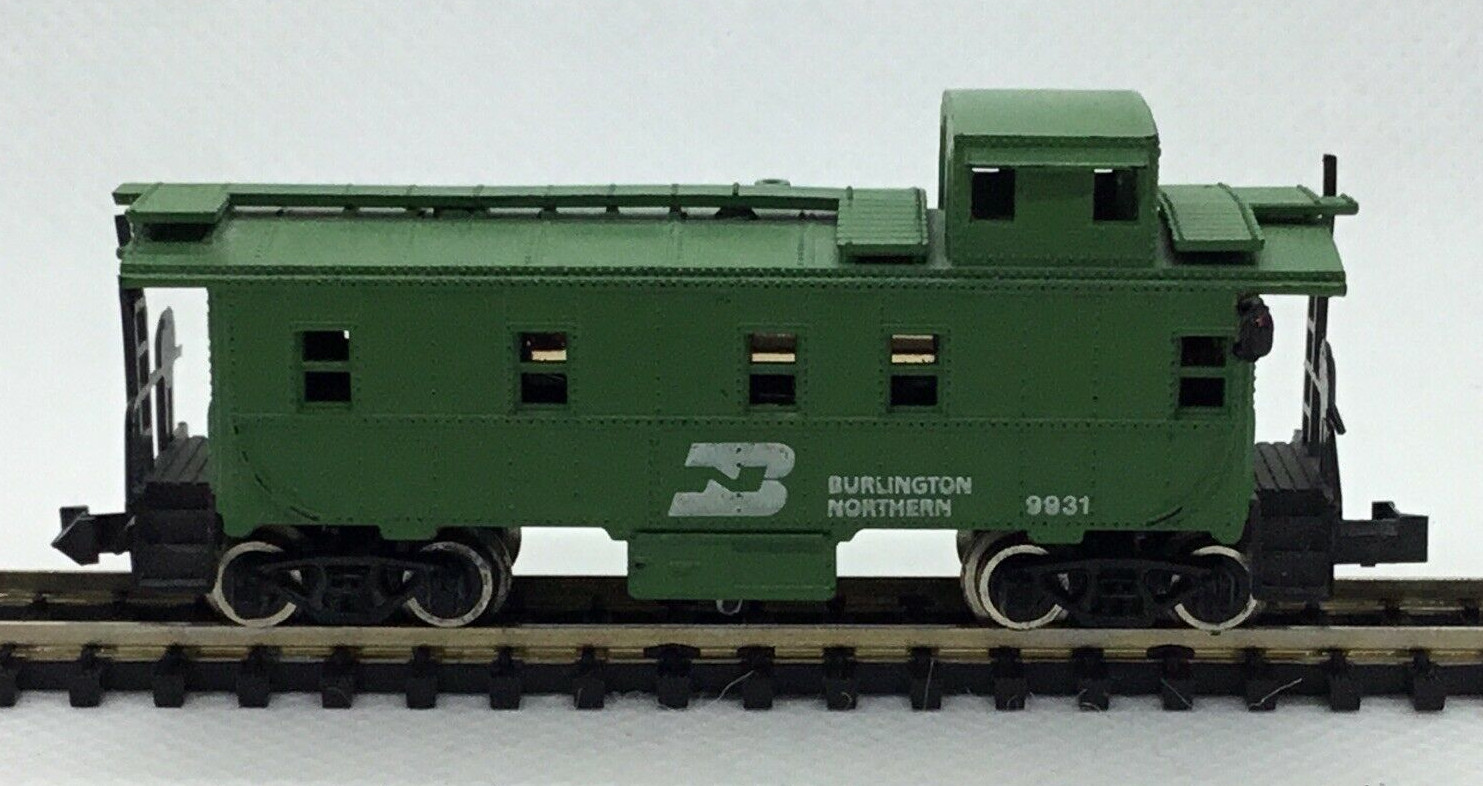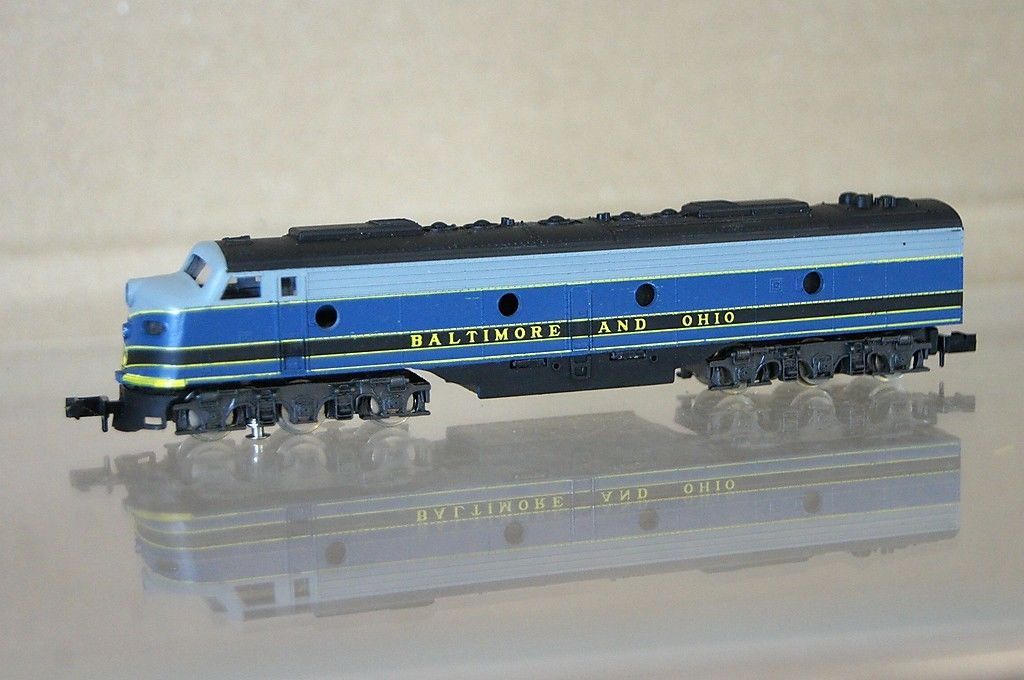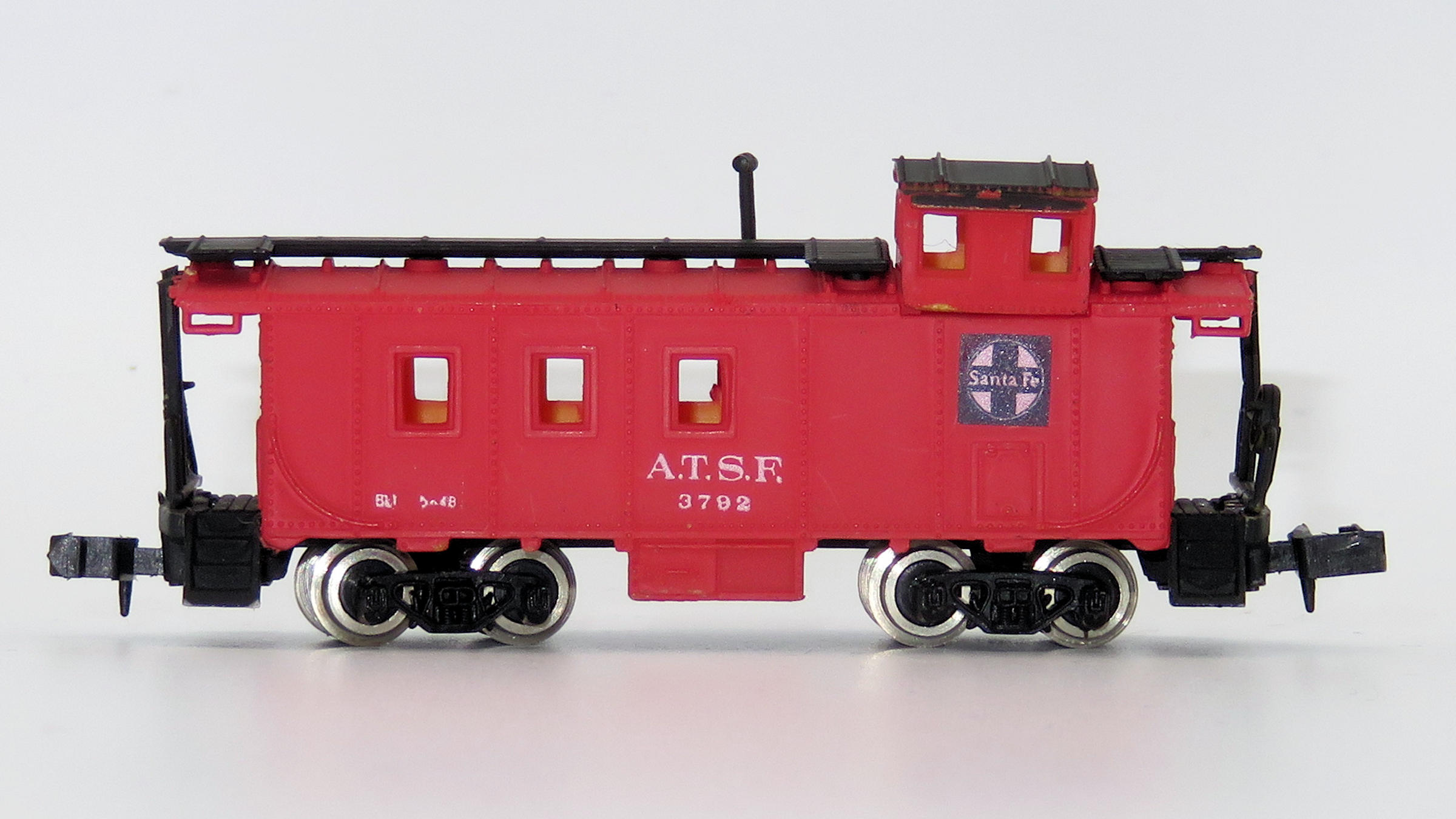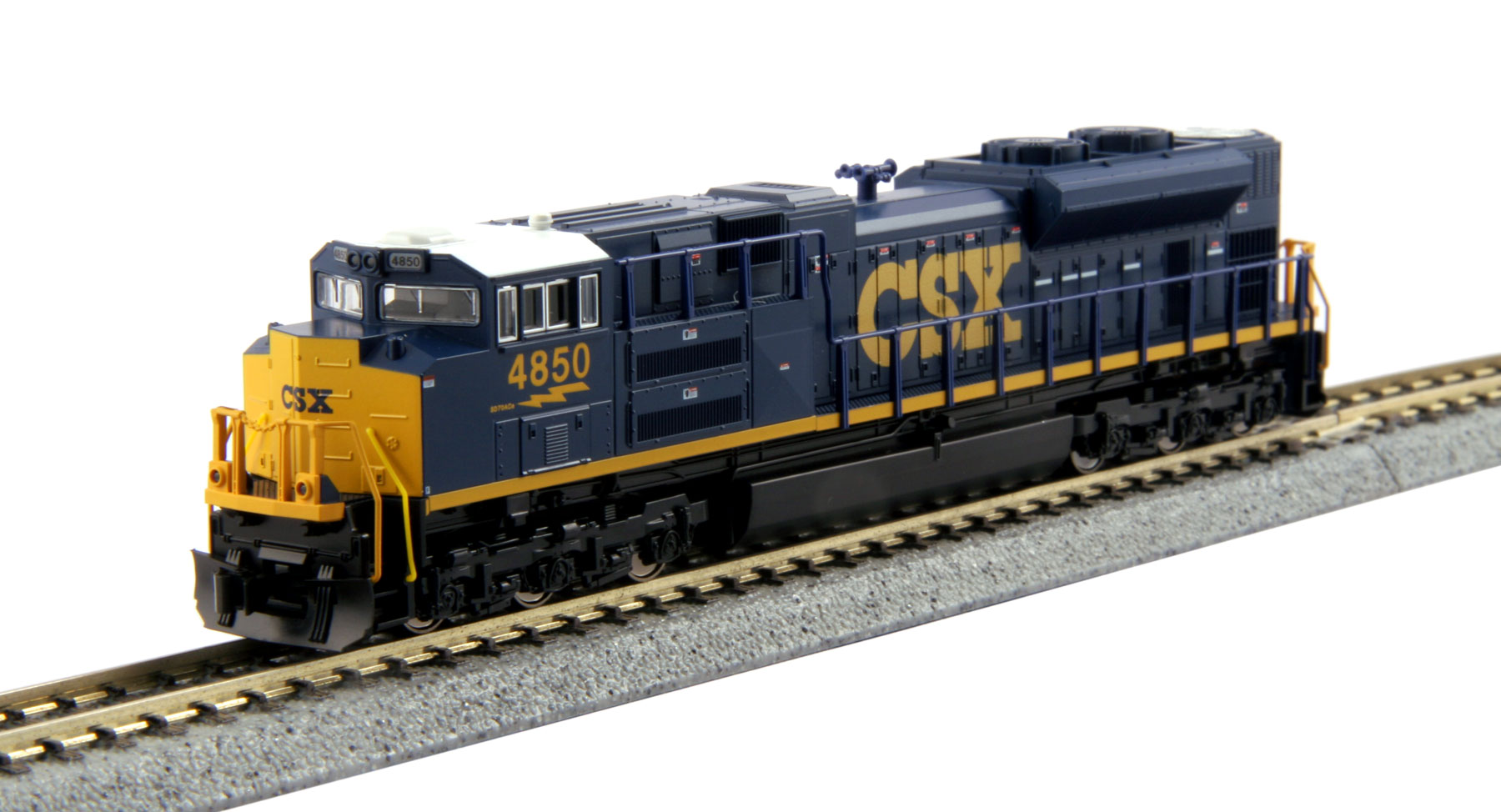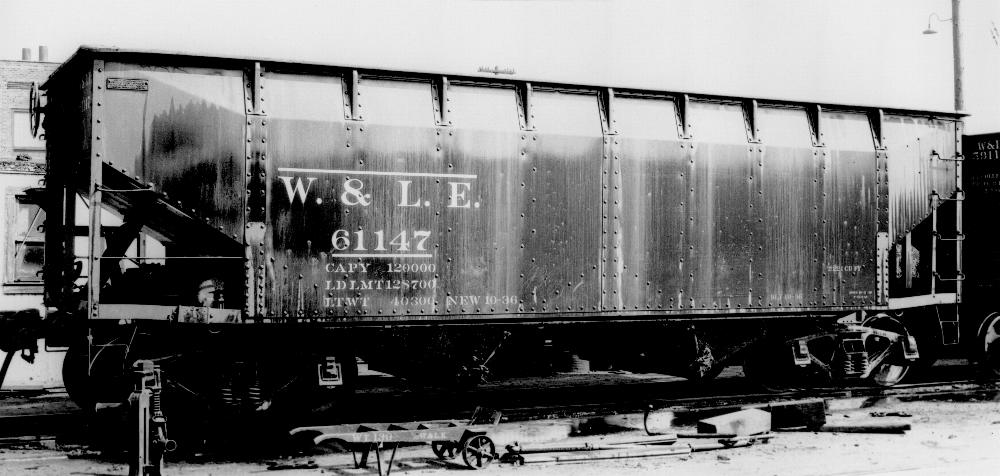Full Throttle - FT-3033-1 - Open Hopper, 2-Bay, Offset Side - Pittsburgh & Lake Erie - 2-Pack
| Brand | Full Throttle |
| Stock Number | FT-3033-1 |
| Original Retail Price | $44.00 |
| Manufacturer | Full Throttle |
| Body Style | Full Throttle Open Hopper 2-Bay Offset |
| Prototype Vehicle | Open Hopper, 2-Bay, Offset Side (Details) |
| Road or Company Name | Pittsburgh & Lake Erie (Details) |
| Reporting Marks | P&LE |
| Road or Reporting Number | 2-Pack |
| Paint Color(s) | Black |
| Print Color(s) | White |
| Coupler Type | Full Throttle |
| Wheel Type | Chemically Blackened Metal |
| Multipack | Yes |
| Multipack Count | 2 |
| Multipack ID Number | FT-3033-1 |
| Release Date | 2013-12-01 |
| Item Category | Rolling Stock (Freight) |
| Model Type | Open Hopper |
| Model Subtype | 2-Bay |
| Model Variety | Offset |
| Region | North America |
| Prototype Era | EU Epoch II (1920 - 1945) |
Specific Item Information:
Road Numbers: P&LE 75729 & 75742
Model Information:
During the first half of the 20th Century, the most common carrier for the transport of coal via rail lines was, in fact, the pervasive little 50-55 ton, twin-bay hopper. Ever-inventive engineers designed a different style of this essential hauler which became enormously popular with many Railroads by the 1930s and 40s. This "offset-side" hopper car had a few advantages over the earlier "rib-side" type. The crease in the upper sides led to more structural strength without using heavier materials, and there was a greater rated capacity with the side panels riveted to the outside of the ribbing, instead of being on the inside. The efficiency was a boon to the coal merchants! The concept proved successful, and was used to build ever-larger hoppers until after WW II, when "rivet pull-through" rendered it impractical for modern rotary dumping. Today, although they are seen less frequently, offset-side hoppers remain an important part of railroad history. Full Throttle presents a universal model of these unique hoppers.
Prototype History:
The late 1920s saw the introduction of the AAR standard “offset-side” 50- and 70-ton hoppers. The design went through several variations in the late 1920s and early 1930s before settling on two versions of the 50-ton car and one 3-bay, 70-ton car in 1935. Most roads went for the AAR standard designs, but the N&W, VGN, and Pennsy were notable holdouts. World War II brought the famous “war emergency” hoppers (only the N&W and MP bought the 70-ton version) and several composite versions of existing designs. After the war, AC&F found some brief success with a welded outside-stake hopper design, but the weld joints broke under the stress of loading and unloading rather than flexing like riveted joints. The offset-side design also had problems: the inside stakes were more prone to corrosion, and they suffered worse from loading and unloading stress than outside-staked hoppers. The design waned in the 1950s and was all but abandoned for new cars by 1960. Some roads (notably the C&O, the B&O, and the L&N) made the best of a bad situation by rebuilding their offset-side cars with all new outside-staked sides in the late 1950s and early 1960s.
Road Name History:
The Pittsburgh and Lake Erie Railroad (P&LE) (reporting mark PLE), also known as the "Little Giant", was formed on May 11, 1875. In 1880, William Henry Vanderbilt's Lake Shore and Michigan Southern Railway bought stock to the tune of $200,000 in the P&LE. The P&LE would stay in the Vanderbilt's New York Central system until Conrail. Company headquarters were located in Pittsburgh, Pennsylvania. The line connected Pittsburgh in the east with Youngstown, Ohio at nearby Haselton, Ohio in the west and Connellsville, Pennsylvania to the east. It did not reach Lake Erie (at Ashtabula, Ohio) until the formation of Conrail in 1976.
The P&LE was known as the "Little Giant" since the tonnage that it moved was out of proportion to its route mileage. While it operated around one tenth of one percent of the nation's railroad miles, it hauled around one percent of its tonnage. This was largely because the P&LE served the steel mills of the greater Pittsburgh area, which consumed and shipped vast amounts of material. It was a specialized railroad deriving much of its revenue from coal, coke, iron ore, limestone, and steel. The eventual closure of the steel mills led to the end of the P&LE as an independent line in 1992.
At the end of 1970 P&LE operated 211 miles of road on 784 miles of track, not including PC&Y and Y&S; in 1970 it reported 1419 million ton-miles of revenue freight, down from 2437 million in 1944.
The P&LE was known as the "Little Giant" since the tonnage that it moved was out of proportion to its route mileage. While it operated around one tenth of one percent of the nation's railroad miles, it hauled around one percent of its tonnage. This was largely because the P&LE served the steel mills of the greater Pittsburgh area, which consumed and shipped vast amounts of material. It was a specialized railroad deriving much of its revenue from coal, coke, iron ore, limestone, and steel. The eventual closure of the steel mills led to the end of the P&LE as an independent line in 1992.
At the end of 1970 P&LE operated 211 miles of road on 784 miles of track, not including PC&Y and Y&S; in 1970 it reported 1419 million ton-miles of revenue freight, down from 2437 million in 1944.
Brand/Importer Information:
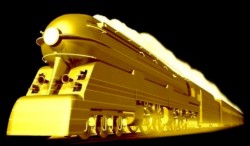 Greetings, I'm Will, a Fine Arts graduate of Kutztown University in Pennsylvania who grew up in the Delaware Valley. I worked for 30 years with the Pennsylvania German Folklife Society. For ten years I had a permanent booth, each month showing my "PA Dutch" wares, at the country's largest under-roof Antique Market in Atlanta, GA. When Mom and Dad started to have health issues, I was forced to give up the nomadic life, but during my travels I came to love Z Scale Model Railroading, as I could easily take small layouts with me to the motels and play with my trains in the evenings!
Greetings, I'm Will, a Fine Arts graduate of Kutztown University in Pennsylvania who grew up in the Delaware Valley. I worked for 30 years with the Pennsylvania German Folklife Society. For ten years I had a permanent booth, each month showing my "PA Dutch" wares, at the country's largest under-roof Antique Market in Atlanta, GA. When Mom and Dad started to have health issues, I was forced to give up the nomadic life, but during my travels I came to love Z Scale Model Railroading, as I could easily take small layouts with me to the motels and play with my trains in the evenings!
Now that Mom and Dad are gone, and after many years of providing care for my "Pappy" in Florida, I find myself a homebody in the "Sunshine State" with a neat little business, supplying interested Z hobbyists with rolling stock and unique quality products!

Item created by: CNW400
on 2021-08-25 13:06:47
If you see errors or missing data in this entry, please feel free to log in and edit it. Anyone with a Gmail account can log in instantly.
If you see errors or missing data in this entry, please feel free to log in and edit it. Anyone with a Gmail account can log in instantly.


